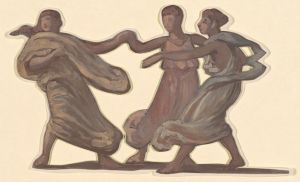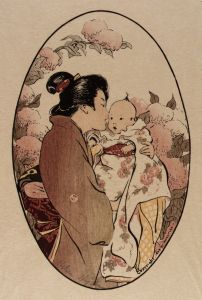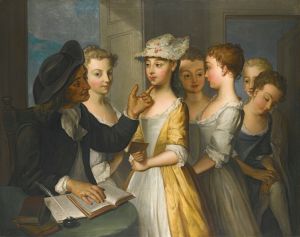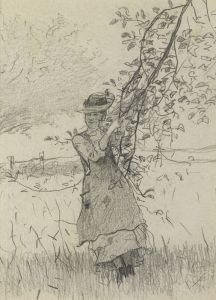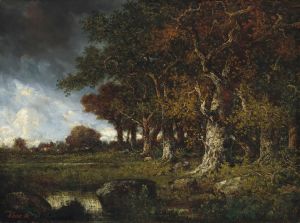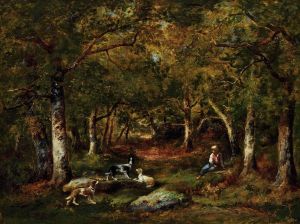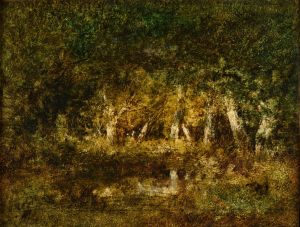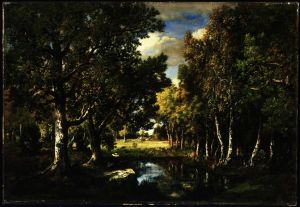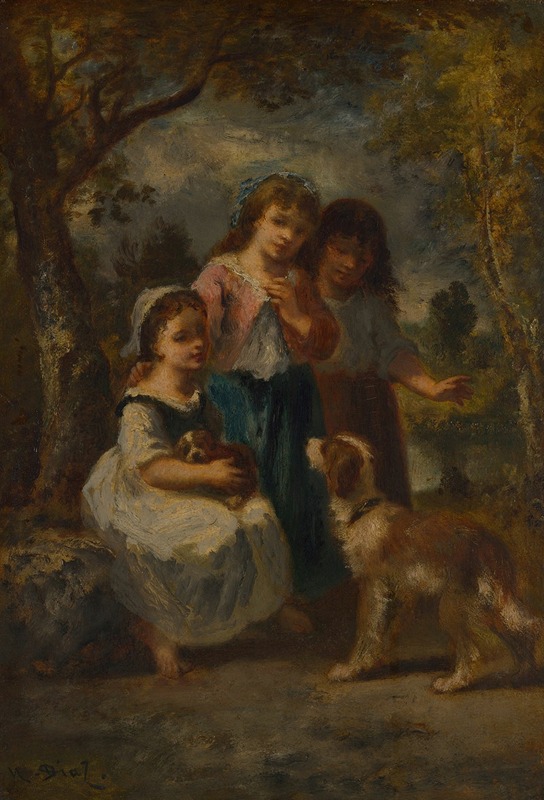
Three Little Girls
A hand-painted replica of Narcisse-Virgile Diaz de La Peña’s masterpiece Three Little Girls, meticulously crafted by professional artists to capture the true essence of the original. Each piece is created with museum-quality canvas and rare mineral pigments, carefully painted by experienced artists with delicate brushstrokes and rich, layered colors to perfectly recreate the texture of the original artwork. Unlike machine-printed reproductions, this hand-painted version brings the painting to life, infused with the artist’s emotions and skill in every stroke. Whether for personal collection or home decoration, it instantly elevates the artistic atmosphere of any space.
Narcisse-Virgile Diaz de La Peña (1807–1876) was a prominent French painter of the Barbizon school, known for his richly colored and atmospheric landscapes, as well as his genre scenes. One of his notable works is "Three Little Girls," a painting that exemplifies his skill in capturing the innocence and charm of childhood.
"Three Little Girls" depicts three young girls in a serene, natural setting. The painting is characterized by its warm, luminous palette and the delicate rendering of the children's features and attire. Diaz de La Peña's use of light and shadow creates a sense of depth and realism, while his attention to detail in the girls' expressions and poses conveys a sense of intimacy and tenderness.
The Barbizon school, to which Diaz de La Peña belonged, was a movement of mid-19th-century French landscape artists who were part of a larger European trend towards realism in art. The Barbizon painters were named after the village of Barbizon near the Forest of Fontainebleau, where many of them gathered to paint nature directly from life. This approach was a departure from the idealized landscapes of earlier periods and was influential in the development of Impressionism.
Diaz de La Peña's work often featured idyllic scenes of rural life and nature, and "Three Little Girls" is no exception. The painting reflects the artist's fascination with the natural world and his ability to capture the fleeting moments of everyday life. The composition of the painting is balanced and harmonious, with the three girls forming a triangular arrangement that draws the viewer's eye into the scene.
The girls in the painting are dressed in simple, yet charming clothing, typical of the period. Their attire, along with the natural setting, suggests a sense of timelessness and universality. The background of the painting is lush and verdant, with soft, diffused light filtering through the trees, adding to the overall sense of tranquility and innocence.
Diaz de La Peña's technique in "Three Little Girls" showcases his mastery of color and texture. The brushstrokes are fluid and expressive, giving the painting a sense of movement and life. The artist's use of color is particularly noteworthy, with warm, earthy tones dominating the palette, creating a cohesive and inviting atmosphere.
"Three Little Girls" is a testament to Diaz de La Peña's ability to capture the beauty and simplicity of childhood. The painting is a fine example of the artist's work and his contribution to the Barbizon school. It remains a cherished piece, reflecting the enduring appeal of Diaz de La Peña's art and his skill in portraying the natural world and the human experience.
In summary, "Three Little Girls" by Narcisse-Virgile Diaz de La Peña is a beautiful and evocative painting that captures the innocence and charm of childhood. Through his masterful use of color, light, and composition, Diaz de La Peña creates a scene that is both realistic and idyllic, reflecting his deep appreciation for nature and the simple joys of life.





